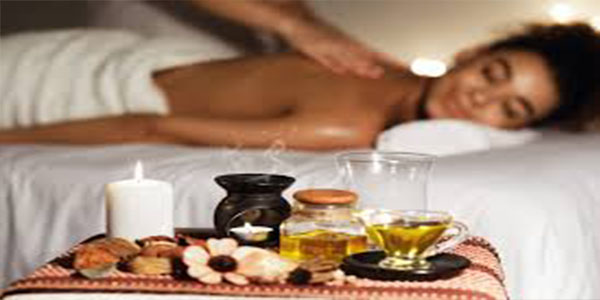The Power of Touch: How Massage Nairobi Boosts Health and Well-Being
Imagine a simple act that melts away tension, soothes sore muscles, and lifts your mood in less than an hour. That’s the promise of massage Nairobi. With centuries of tradition behind it, massage has moved far beyond ancient healing rituals to become a keystone of modern self-care and wellness routines.
People from all walks of life seek massage for relief, relaxation, and sometimes even recovery. Today, science and personal experience team up to show just how valuable skilled touch can be for both body and mind.
Understanding Massage Therapy
Massage therapy uses hands-on techniques to work muscles, relieve stress, and support health. It isn’t just someone giving a quick back rub. Trained therapists use a range of strokes, pressure, and rhythms to tap into the body’s natural healing abilities.
Primary techniques include:
- Effleurage: Smooth, gliding strokes to warm up muscle tissue.
- Petrissage: Kneading and squeezing to release knots and improve circulation.
- Percussion: Rhythmic tapping or chopping to wake up tired muscles.
- Friction: Deep, circular movements that target problem areas.
On a physical level, massage prompts blood flow, moves lymph fluid, and eases muscle tension. Mentally, touch can trigger the release of feel-good chemicals, helping break the cycle of stress and pain.
Types of Massage Nairobi: An Overview
Massage Nairobi isn’t one-size-fits-all. Each type offers its own approach, roots, and benefits.
- Swedish Massage: Known for gentle, flowing strokes. Great for beginners or those seeking stress relief.
- Deep Tissue Massage: Uses strong pressure and slow movements to target deeper muscle layers. Popular with athletes or people with chronic tightness.
- Sports Massage: Blends techniques to help prevent injuries or speed up recovery after workouts.
- Thai Massage: Combines stretching, compression, and movement. Often called “lazy man’s yoga.”
- Shiatsu: A Japanese style using finger pressure on specific points along the body’s energy pathways.
Some massages come from ancient traditions, while others are modern blends. What they share is a focus on connection—between practitioner and client, body and mind.
How Massage Affects the Body and Mind
A good massage Nairobi does more than loosen tight muscles. It sets off a chain reaction that benefits nearly every system.
Physical benefits:
- Improved blood flow means more oxygen and nutrients reach your cells.
- Muscle fibers untangle, reducing soreness and stiffness.
- Swelling and inflammation often decrease after regular sessions.
- Digestion, sleep, and even immune function can improve with reduced stress.
Mental and emotional benefits:
- The calming effect of touch can lower the heart rate.
- Stress hormone (cortisol) levels drop, while happy chemicals like serotonin and dopamine rise.
- Many people report feeling calmer, happier, or just “lighter” after a session.
- Regular massage can even become a healthy tool for coping with anxiety and sadness.
Who Can Benefit from Massage?
Massage isn’t just for adults with tight shoulders. Nearly anyone—kids, seniors, weekend warriors, office workers, and people with medical needs—can gain from expert touch.
Groups and lifestyles that often benefit:
- Athletes and active people (for muscle recovery)
- Desk workers (for tension and posture)
- Pregnant individuals (for comfort and relaxation)
- Seniors (for gentle relief from stiffness)
- Those experiencing stress, anxiety, or mild depression
Contraindications: Some conditions mean massage should be avoided or adjusted. Examples include:
- Infectious skin issues
- Certain heart or joint problems
- Fever or contagious illness
- Recent surgery or injuries
A skilled therapist will always check your health background first.
Integrating Massage into a Healthy Lifestyle
Just as no two bodies are the same, massage is most effective when tailored to your needs and schedule. Used wisely, it can become a key tool in your overall routine for well-being.
Tips for adding massage to your life:
- Listen to your body. Notice sore spots or changes in stress levels.
- Start with sessions every couple of weeks, then adjust based on what feels best.
- Mix massage with movement, good sleep, and nutrition for bigger results.
- Choose a certified therapist. Credentials matter, especially for injury or medical massage.
What to Expect During a Massage Session
The first massage can feel a bit like stepping into the unknown. A typical session usually goes like this:
- Intake: The therapist asks about your goals, pain points, and health.
- Preparation: You’ll undress to your comfort level and lie on a padded table, often under a fresh sheet or towel.
- Session: The therapist uses oils or lotions for smoother movements and works specific areas as needed.
- Aftercare: Drink water, stretch gently, and rest if you can. It’s common to feel extra relaxed—or even sleepy.
Pro tip: Speak up if something hurts or feels uncomfortable. A good therapist wants you to have the best possible experience.
At-Home Massage Tips and Tools
You don’t need a professional every time. Simple techniques and affordable tools can help maintain that relaxed feeling between sessions.
Easy self-massage ideas:
- Tennis ball or foam roller under your back or feet
- Gentle kneading of shoulders or neck using your hands
- Massage stick or cane for hard-to-reach spots
- A warm compress to soothe tight areas
Safety best practices:
- Avoid massaging areas that are swollen, bruised, or numb.
- Use gentle pressure, especially if you’re new to self-massage.
- Take deep breaths to help the body relax.
Conclusion
Massage blends ancient wisdom with modern science to support health, happiness, and resilience. It’s more than a treat—it’s a practical path to feeling better in body and mind.
Whether you seek relief from aches, want to let go of stress, or need time to recharge, massage offers a simple, accessible way to care for yourself. Let the power of touch remind you that sometimes, the best medicine is human connection.
Ready for your first massage? Or inspired to try at-home techniques? Your journey to better well-being starts with a single touch.

